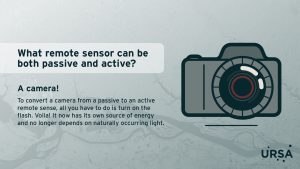Remote sensing camera are vital tools in modern Earth observation, allowing for the capture of detailed images and data from various distances. These cameras are essential in gathering information for scientific research, environmental monitoring, and even disaster management. With the rise of satellite technology, remote sensing cameras have become increasingly important in understanding and observing our planet from space.

What is a Remote Sensing Camera
A remote sensing camera is a specialized device designed to capture images and data from a distance, typically through satellites or aircraft. These cameras operate in various spectrums, including visible light, infrared, and even microwave, to provide a comprehensive view of the Earth’s surface and atmosphere. By capturing data across different wavelengths, remote sensing cameras offer insights that are beyond the capabilities of traditional photography.
Applications of Remote Sensing Cameras
- Environmental Monitoring Remote sensing cameras are instrumental in tracking environmental changes. These cameras can capture images of forests, oceans, and glaciers, helping scientists monitor deforestation, ocean temperatures, and ice melt. By providing consistent and accurate data, remote sensing cameras support efforts to address climate change and preserve natural ecosystems.
- Agriculture and Land Use In agriculture, remote sensing cameras enable farmers to monitor crop health, assess soil conditions, and optimize irrigation practices. Satellite images captured by these cameras can reveal patterns in vegetation, detect pest infestations, and assist in land use planning. This technology enhances precision farming, leading to increased productivity and sustainable practices.
- Disaster Management Remote sensing cameras play a crucial role in disaster management by providing real-time images and data during natural disasters such as earthquakes, floods, and wildfires. These cameras allow authorities to assess damage, monitor affected areas, and coordinate relief efforts. The ability to capture high-resolution images from space makes remote sensing cameras indispensable in responding to crises.
- Urban Planning Urban planners use remote sensing cameras to analyze land use patterns, monitor urban expansion, and plan infrastructure projects. By capturing detailed images of cities and their surroundings, these cameras help planners make informed decisions about zoning, transportation networks, and environmental impact assessments. The data gathered supports sustainable urban development and resource management.
Technologies Behind Remote Sensing Cameras
Remote sensing cameras rely on advanced technologies to capture and process images. Some of the key technologies include:
- Multispectral Imaging Multispectral imaging allows remote sensing cameras to capture data across multiple wavelengths, from visible light to infrared. This enables the detection of different materials and surface features, providing a more comprehensive view of the observed area. Multispectral cameras are widely used in environmental monitoring and agricultural assessments.
- Hyperspectral Imaging Hyperspectral imaging goes beyond multispectral by capturing a continuous spectrum of data for each pixel in the image. This technology allows for the identification of specific materials and substances, making it highly valuable in mineral exploration, environmental studies, and even medical research. Hyperspectral cameras are becoming increasingly important in various industries.
- High-Resolution Imaging High-resolution remote sensing cameras capture images with exceptional detail, allowing for precise analysis of small features on the Earth’s surface. These cameras are critical in applications requiring detailed mapping, such as urban planning, infrastructure monitoring, and environmental studies. The ability to capture fine details enhances the accuracy of data interpretation.
- Thermal Imaging Thermal imaging remote sensing cameras capture heat signatures emitted by objects on the Earth’s surface. These cameras are particularly useful in monitoring temperature variations, detecting forest fires, and analyzing energy consumption in urban areas. Thermal imaging technology is essential for applications that require non-visible data.
Challenges and Future Trends in Remote Sensing Cameras
Despite the advancements in remote sensing camera technology, there are still challenges to overcome. One of the main challenges is ensuring the accuracy and reliability of data in various environmental conditions. Factors such as cloud cover, atmospheric interference, and sensor calibration can affect the quality of the images captured.
Looking ahead, the future of remote sensing cameras is promising, with trends pointing toward the development of more advanced sensors, increased automation, and enhanced data processing capabilities. These advancements will enable even more precise observations, supporting a wide range of industries and scientific endeavors.
Remote sensing cameras have become indispensable in modern science and industry. They provide critical data that is used to monitor environmental changes, support agriculture, manage natural disasters, and plan urban development. As technology continues to evolve, remote sensing cameras will play an even greater role in shaping our understanding of the Earth and addressing global challenges.
